
Most experts on the economy of Romania speak of a slowdown in growth in 2023. A slowdown that could lead to job losses in some sectors (and, of course, job creation in others). HotNews analyzed recently published survey data on this topic, spoke with labor market experts, and examined both wage dynamics from 2007-2022 and net wage dynamics during the two most recent crises (2008-2011 and the pandemic).
The most protected from a possible crisis are those who work in the field of IT&C
They had the biggest salary increase since Romania joined the European Union. The numbers in the graph represent the percentage growth from 2022 to 2007.
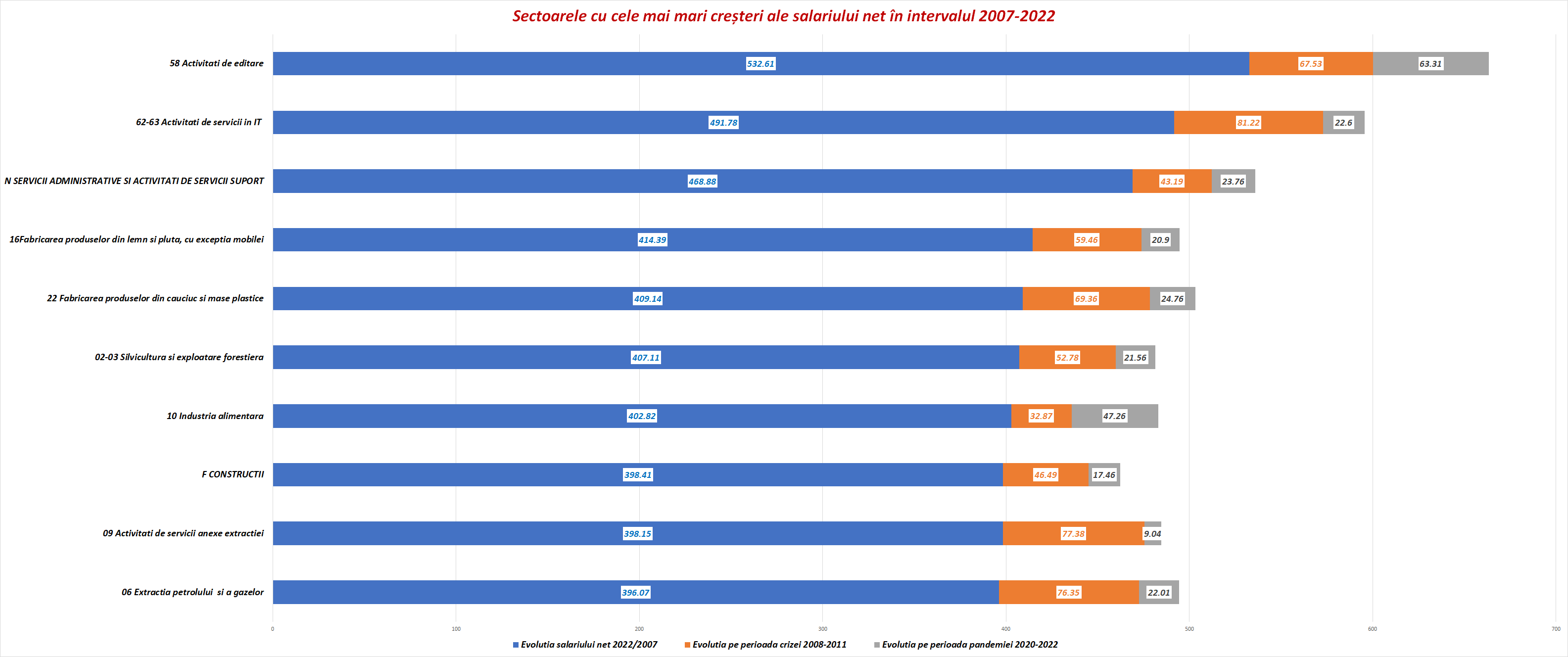
Although the activity of editing (caen code 58) is the first in the table above, it includes the activity of editing software (computer games and editing of other software products – applications, transposition or adaptation of software, hosting of programs or retail Software). The second place is occupied by IT&C services, and at 3 we find administrative and support services.
This group includes: rental and leasing activities, labor service activities (employment agency activities and staffing activities on a temporary basis), travel and travel agency operator activities; investigative, security and protection activities, landscaping activities, cleaning and building services, and secretarial activities and services provided mainly to businesses.
In fourth place is the activity of manufacturing wood products. This includes cutting and planing wood, making parquet, making other elements of carpentry and carpentry for construction or making wooden containers.
During the 2008-2010 crisis, all IT workers fared the best, followed by workers in the automotive industry (with the entire horizontal chain – auto parts, electrical components, etc.), and those engaged in activities related to mining (or for sound ). , drilling, geophysical research, liquefaction and regasification of natural gases, etc.)
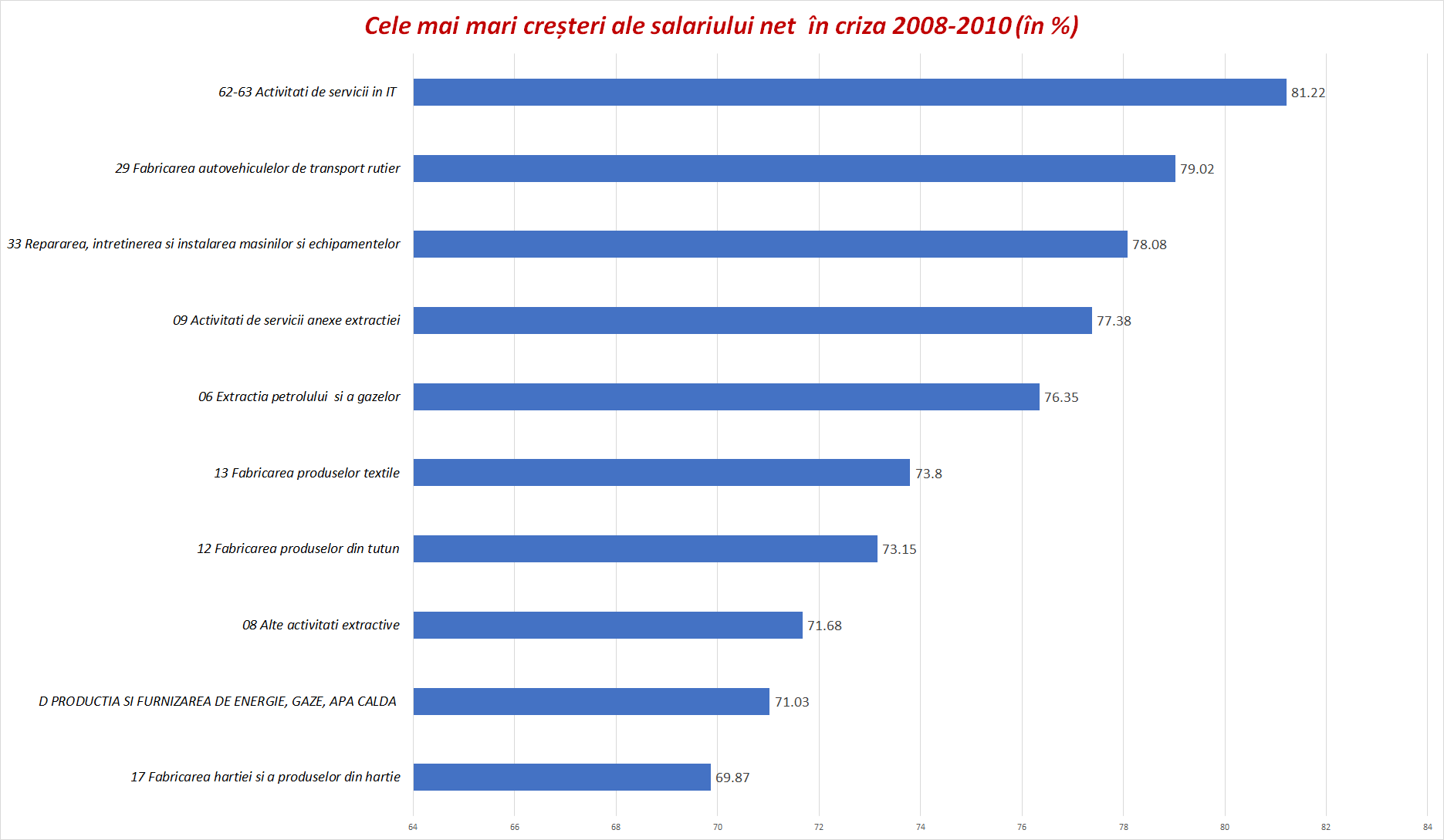
In the period 2020-2022, the biggest gainers were also IT workers (we remind you that the editing activity – caen code 58 – includes the activity of editing software – computer games and editing other software products – applications, transposition or adaptation of software , application hosting or software retailing).
It is followed by the food industry, the production of tobacco products, air transport and Kahn code 32-Other industrial activity. The latter code includes the manufacture of jewellery, jewellery, coinage, the manufacture of musical instruments, the manufacture of sporting goods, the manufacture of games and toys, the manufacture of medical and dental appliances, apparatus and instruments, and the manufacture of brooms and brushes.
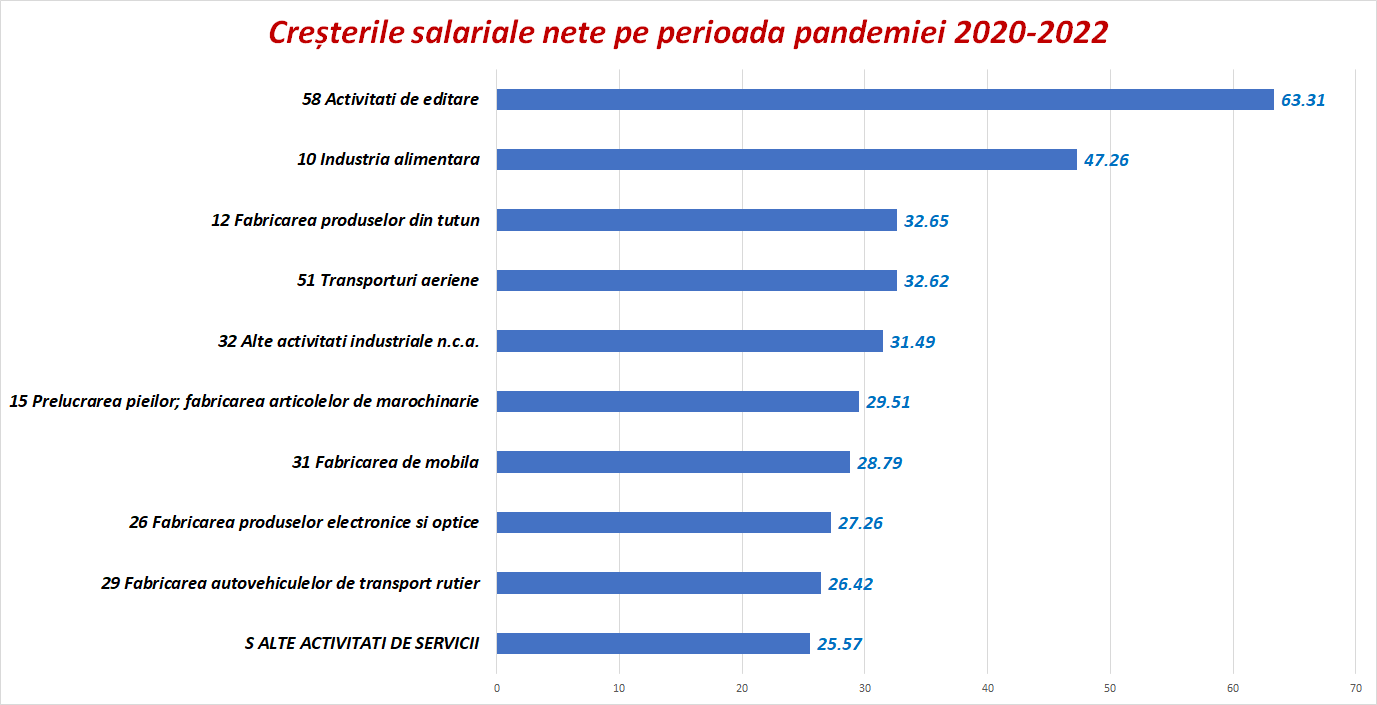
Almost a quarter of respondents to the Best Jobs study say they will change careers because the industry or company they work for is highly dependent on the economic context and they want to work in a more secure area. Most of them work in sales, production, tourism or transport.
Money and working from home are the main criteria when looking for a new job
Although salary prospects are still the main criterion by which most Romanian workers choose a new job, the security of the field of activity and its resistance to external shocks became a priority in this context for 70% of respondents to the BestJobs survey. .
Another 42% focus on career and extra payments, but the opportunity to have a lot of free time (37%) or the opportunity to work remotely (34%) is important. A quarter believe that the safest jobs are also in industries or companies closely related to the online environment.
According to respondents to the BestJobs survey, IT and telecommunications (54.7%), military, security and defense (37.8%), medicine and healthcare (37.6%) were least affected by the current healthcare crisis. as well as calls. center and customer support (35.2%). At the opposite pole are sports, arts and entertainment (5.6%), beauty services (7.5%) or tourism and food (8%).
According to data from Undelucram.ro, the most in-demand positions – both vacancies and reviews – are IT, retail, BPO and services, banking and recruitment. The most requested roles on the platform and the average salaries received are as follows: Software Developer: 7,400 lei (IT), Commercial Worker: 2,400 lei (Retail), – Call Center/Support Specialist: 2,800 lei (BPO&Services), Credit Officer: 5,000 lei (banking), personnel specialist: 4,900 lei (personnel department/recruitment)
The number of working Romanians over 65 will double in 10 years / Sectors that will create jobs and those in which they will disappear
That’s right, according to the estimates of the European Center for the Development of Vocational Training (Cedefop), employment in Romania will grow at a higher rate than the EU-27 average. Thus, the labor market participation rate for people over 65 will reach 82% (from 56% in 2000).
The graphic below shows the “map” of employment difficulties in Romania in the period 2021-2030:

Employment in construction will grow relatively strongly between 2022 and 2030, while employment in agriculture will continue to decline
In the manufacturing sector, employment growth will mainly be driven by employment growth in the food industry, the production of beverages and tobacco products, and engineering.
Sub-sectors such as wholesale and retail trade, accommodation, catering and transport will see the number of workers increase, even if in the case of transport or logistics, job growth will be strongly affected by robotics and automation.
In the services sector, activities such as legal, accounting, consulting and telecommunications services will have the strongest results, while administrative services will be the weakest.
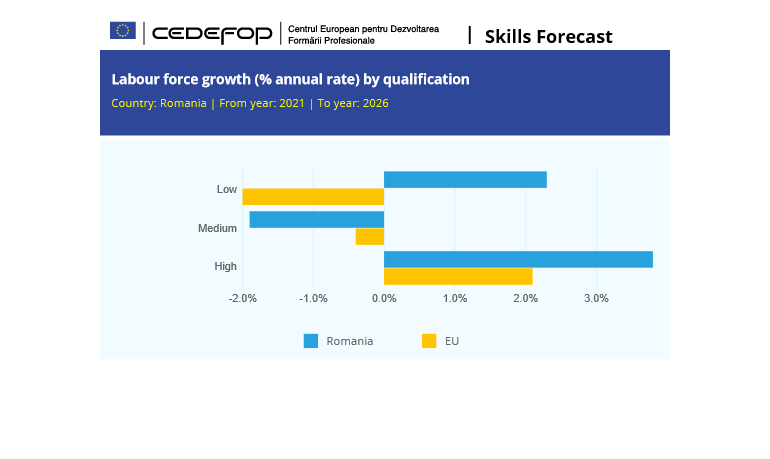
The number of graduates with higher education is increasing significantly, but the number of jobs requiring higher education is not increasing as much.
In other words, there is a very wide gap between what the real economy offers and what the generations entering the labor market with increasingly higher qualifications offer.

“It is also a problem of the structure of the Romanian economy, which is not able to accept a very large number of graduates of higher education. We have a highly developed academic higher education, not vocational higher education. There will be pressure on those with secondary education, and those, in turn, will put pressure on the less qualified. This is a problem of the structure of the economy,” says Katelin Ginararu, a researcher at the National Institute for Scientific Research in the Field of Labor and Social Protection.
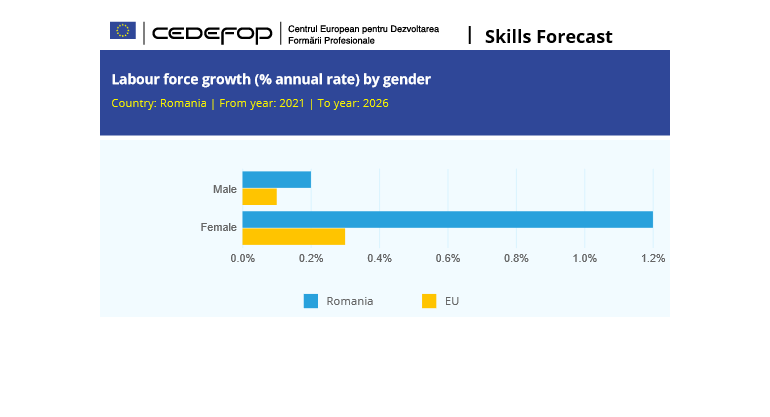
“There is a mismatch, a very strong mismatch between demand and supply in the labor market. I would say that between the logic of demand and the logic of supply. I mean what business entities demand, what structure of business entities exists – this is the logic of demand. When I say propositional logic, I mean what people have actually done. People have always followed the idea of increasing the level of professional training, the number of graduates of higher education institutions has increased very much here, this is one of the largest increases in the region of Central and Eastern Europe. However, the labor market did not offer such jobs that would suit these graduates,” says Ginaru in discussion from Hotnews.ro
He performed research work for one of the state administrations of the country. where he showed that, unfortunately, the majority of higher education graduates in Romania are currently concentrated in the public administration sectors. Thus, almost 40% of higher education graduates in Romania are concentrated in public administration, education and health care.
I have to say that almost 60 percent of the workforce in general is in sectors that have nothing to do with higher education: through Horeca, warehouses, retail, other services, all kinds of things like that.
There is indeed a very, very strong mismatch between the structure of the economy, which ultimately determines the structure of the demand for labor, and the structure of the supply of labor entering the market. And I repeat, the offer of the labor force with higher education was aimed at the spheres of public administration, the sphere that contributes to the formation of GDP through final consumption, also says the Romanian researcher.
Source: Hot News
Mary Robinson is a renowned journalist in the field of Automobile. She currently works as a writer at 247 news reel. With a keen eye for detail and a passion for all things Automotive, Mary’s writing provides readers with in-depth analysis and unique perspectives on the latest developments in the field.